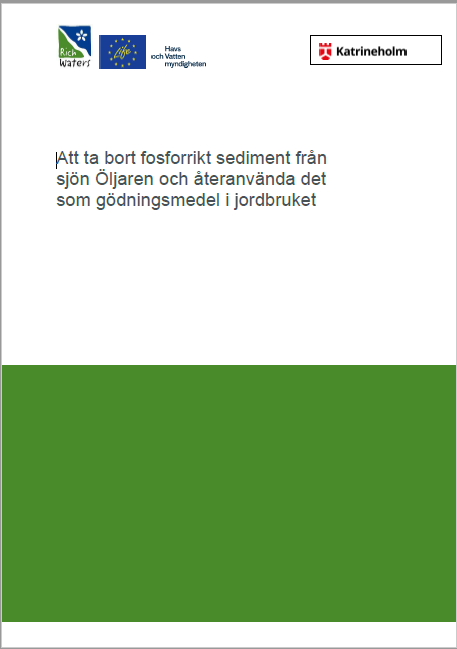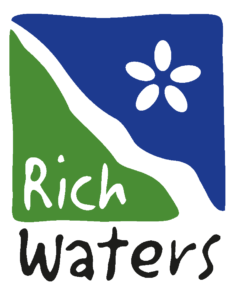
Read the full report in Swedish
Summary
This action is about environmentally friendly removal of phosphorus-rich sediment from lake Öljaren and re-using it as a fertilizer in agriculture. The sediments will be gathered up with a low flow dredging device and pumped up to a gesosack for dewatering. The dewatered sediments will be spread on arable land as a fertilizer. The rejectwater flows back to Öljaren through a natural ditch. Katrineholms Munipacility (KAT) is responsible. Hjälmarens vattenvårdsförbund (HJVVF) is responsible for parts of the monitoring. This action is linked to another action in LIFE IP Rich Waters which has developed a tool to identify lakes with internal loading. Some of the sediment samples is gathered up by persons in that action for further analyzes.
The method of dredging to be employed is considered to have minimal direct negative environmental effects as the dredging device hovers over the lake floor removing loose sediment through suction. In that way it is virtually no dispersion of sediment particles into the water phase occurs. Many lakes in the district are highly eutrophied and internal loading from the sediments play a significant part. Our work will therefore serve as a case study to increase the knowledge, experience and allow for the evaluation of the environmental effects of dredging. The experience gained will be highly useful for possible future application of the technology in other eutrophied lakes across Sweden. The action will also produce knowledge and lessons learned concerning this rather new technique used. It will also increase the knowledge about reusing sediments as fertilizers. Effective recirculation of nutrients has the potential to reduce the need of artificial inorganic fertilizers. Hopefully it leads to an increase in recreational value for Lake Öljaren through improved water quality, wildlife, potential for fishing swimming.
